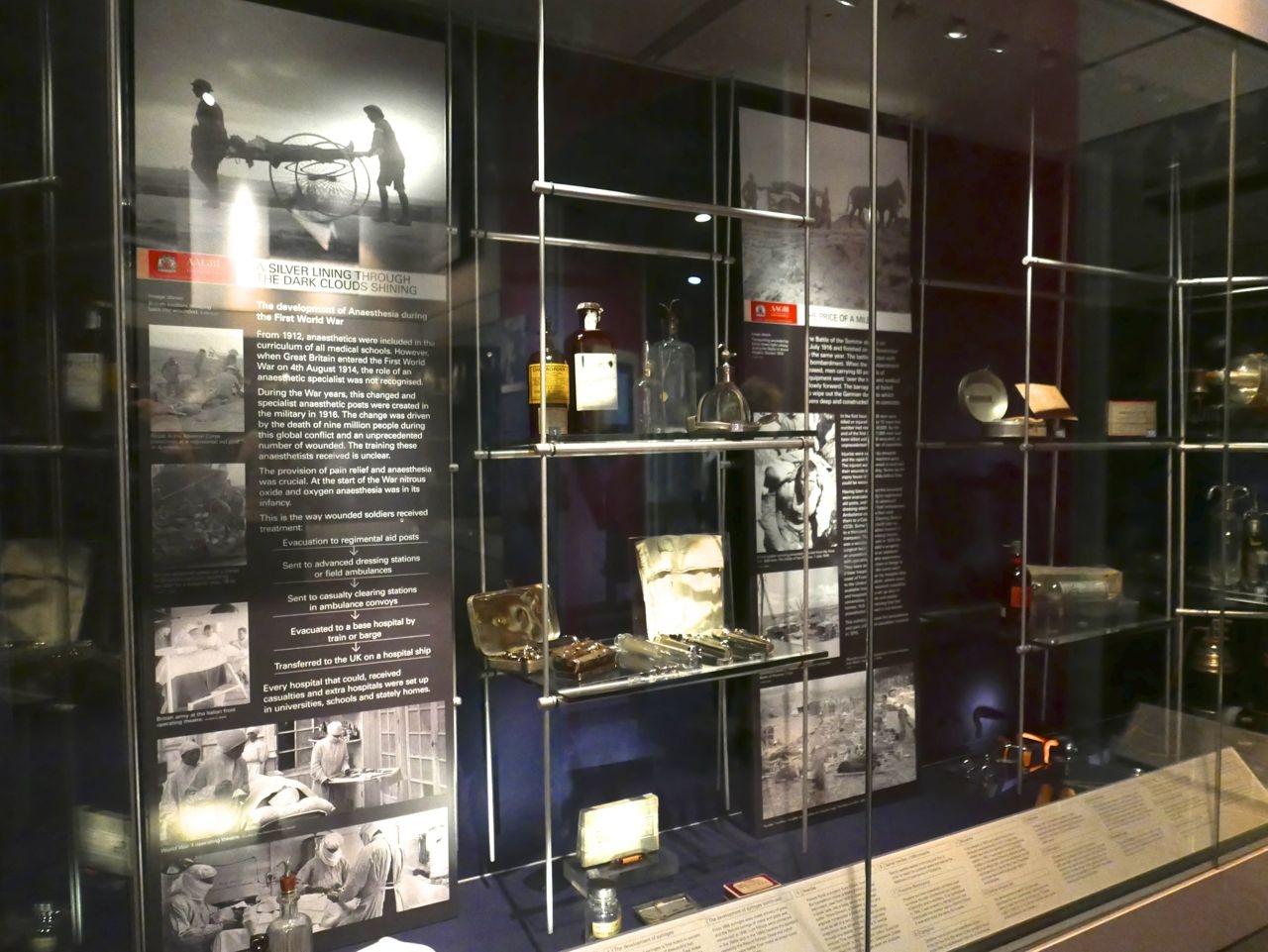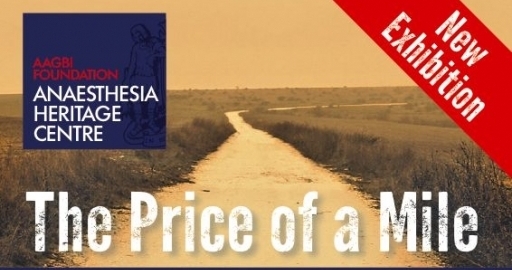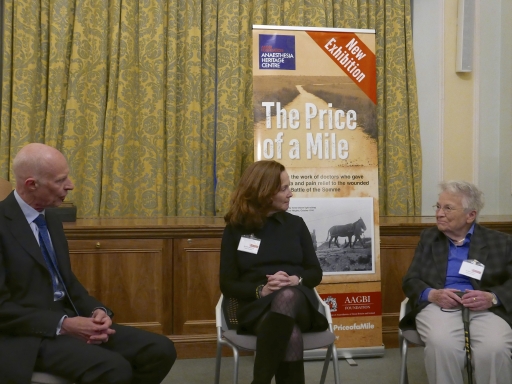‘The Price of a Mile’, an exhibition honouring doctors who gave anaesthesia and pain relief to the wounded during the Battle of the Somme, has opened at the Anaesthesia Heritage Centre in London.
This display of anaesthetists’ equipment offers an insight into the facilities available to the doctors, nurses and medical staff who were confronted with mass casualties on the Somme a century ago.
The enormous scale of the challenge was outlined by military medical historian Dr Emily Mayhew in a lecture on 7 October 2016, setting the scene for the latest in a series of WW1 Centenary exhibitions organised by the Association of Anaesthetists of Great Britain & Ireland.
The British Army deployed it’s ‘finest and most experienced’ medical staff in readiness for the Somme offensive in July 1916, and battlefield medicine had already been evolving to cope with industrialised warfare, Dr Mayhew explained.
“But the Somme is overwhelming. The system simply collapses in on itself. The casualty clearing stations and field hospitals simply filled up.”
“In some cases, whole stretcher bearer teams were killed in a day. It meant that men lay out for three or four days in shell holes until other bearer teams could be gathered together to go out and bring them in.”
 ‘The Price of a Mile’ exhibition (Photo: Centenary News)
‘The Price of a Mile’ exhibition (Photo: Centenary News)
Yet in the run-up to 1916, army medical teams had learned valuable lessons about the treatment of battlefield casualties from the early stages of the Great War when the severe trauma caused by high velocity munitions first became a concern.
In particular, clinical facilities were moved as close to the front line as possible from January 1915 onwards, Dr Mayhew pointed out. A specialist stretcher bearer corps was also created, and trained for the first time to control bleeding and administer morphine.
These stretcher bearers, or first paramedics, were men who ‘had a bit of go about them and they’re interested in studying something that might be a trade after the war’ Dr Mayhew continued.
And they soon learned from experience, spreading the word to comrades and medical officers alike that it was wise to be sparing in the use of morphine, that an alert patient could warn of bleeding, shock and other potentially fatal symptoms.
Moreover as Dr Mayhew explained: “It’s assumed when you say stretcher bearers have morphine tablets that they are just going to knock out all their patients because it’s an easier job. Actually it’s a deadweight, much more difficult to carry them home.
“And if for some reason one of your bearer team is injured, and you have to pick up a patient on your back which is often what happened, you need a patient who is awake for that.”
When it came to the Somme, men who’d once been teased ‘to get a gun and go out and do some proper fighting’ had won the respect of the front line soldiers going over the top, Dr Mayhew said.
“By then the troops knew that the stretcher bearers were there to help them. They understand by the first of July that those men who stand at the back very quietly, who’re going to wait about 20 seconds and then go out after them are their best hope for getting back alive.”
“Nobody understands the ‘Price of a Mile’ better than a stretcher bearer. In heavy mud or under heavy fire, a mile could be an hour’s carry of a 10 or a 12-stone man on a stretcher, with a team that will hopefully be four bearers, but is more likely to be two.
 ‘The Price of a Mile – Anaesthesia during the Battle of the Somme’ runs until July 2017 at the Anaesthesia Museum, part of the Anaesthesia Heritage Centre, 21 Portland Place, London, W1B 1PY. Entry is free.
‘The Price of a Mile – Anaesthesia during the Battle of the Somme’ runs until July 2017 at the Anaesthesia Museum, part of the Anaesthesia Heritage Centre, 21 Portland Place, London, W1B 1PY. Entry is free.
Also in Centenary News: ‘Wounded’ – First World War medical exhibition at the Science Museum, London.
Dr Emily Mayhew, is a military medical historian at Imperial College London, specialising in the study of severe casualty in 20th & 21st century warfare. Read Centenary News’ review of her book, ‘Wounded: The Long Journey Home from the War’, here.
Images: Centenary News (exhibition poster courtesy of Anaesthesia Heritage Centre)
Reporting by CN Editor Peter Alhadeff
